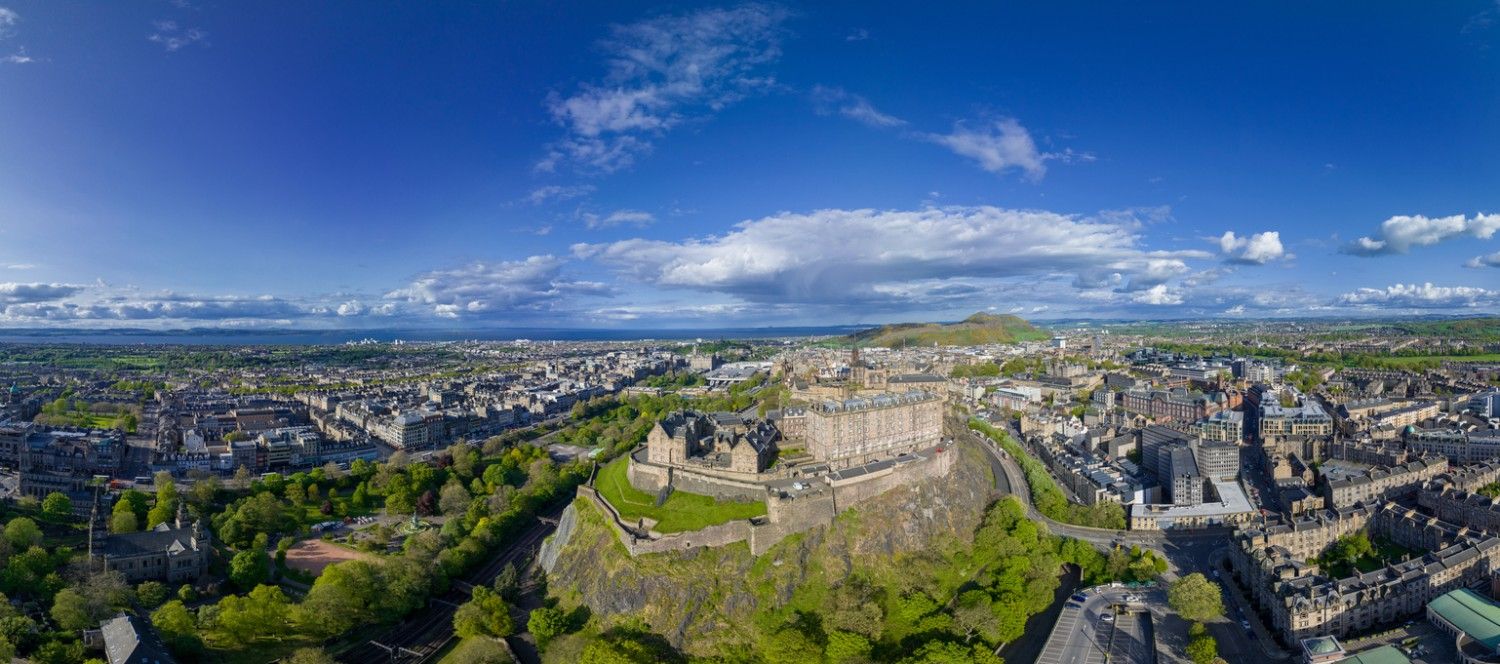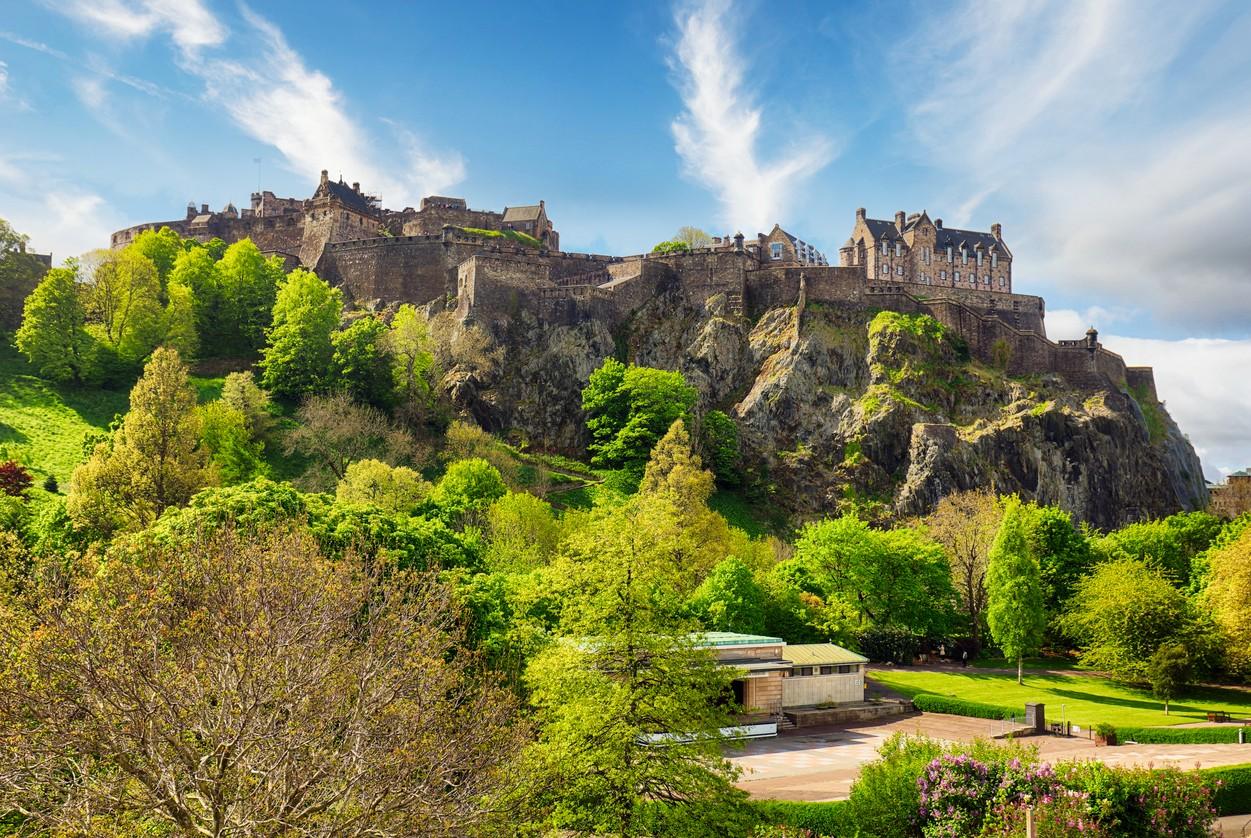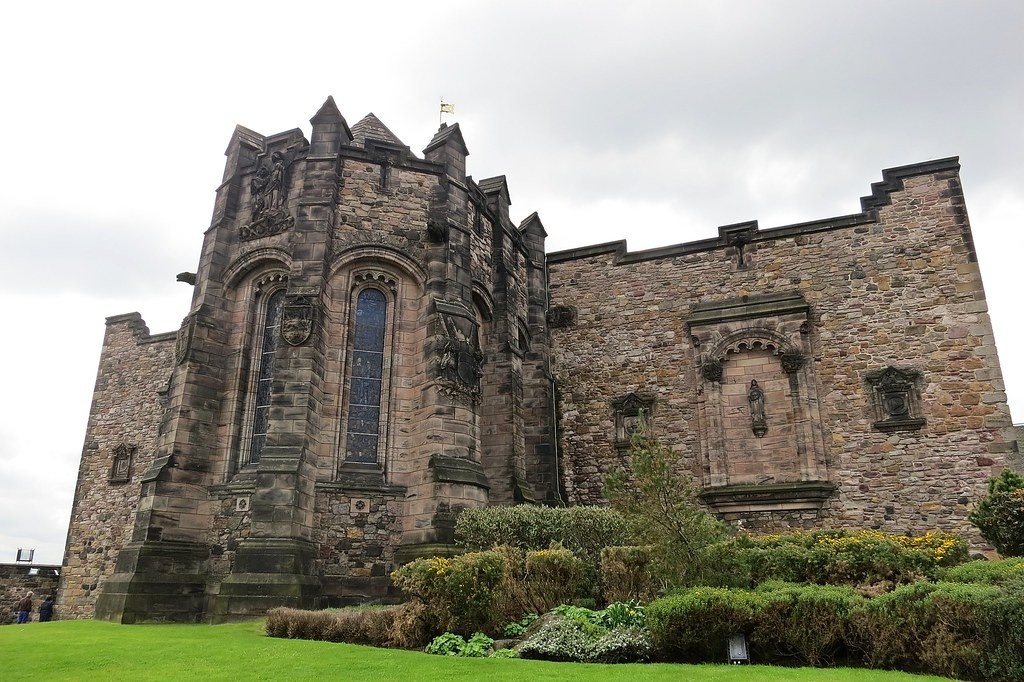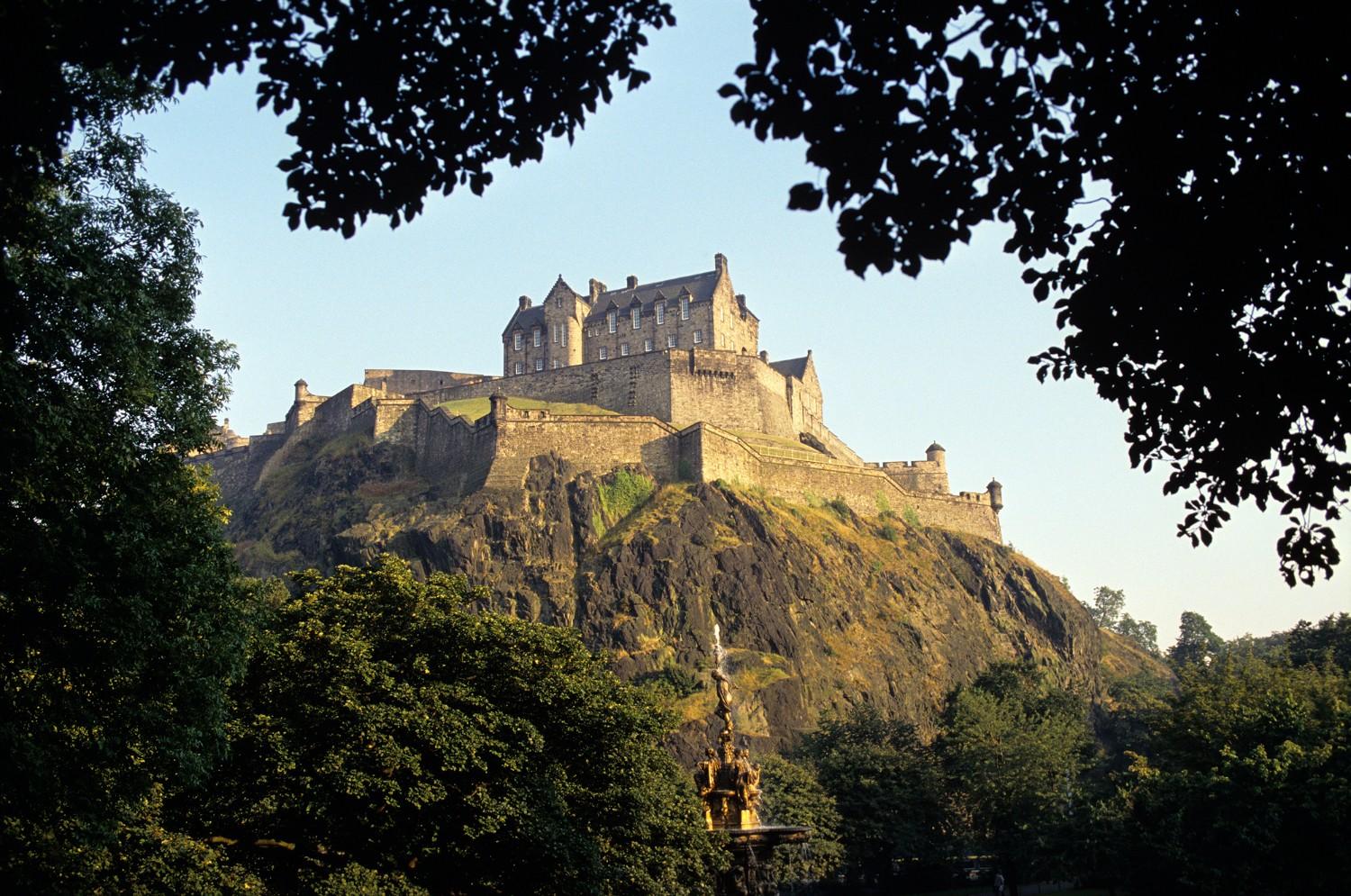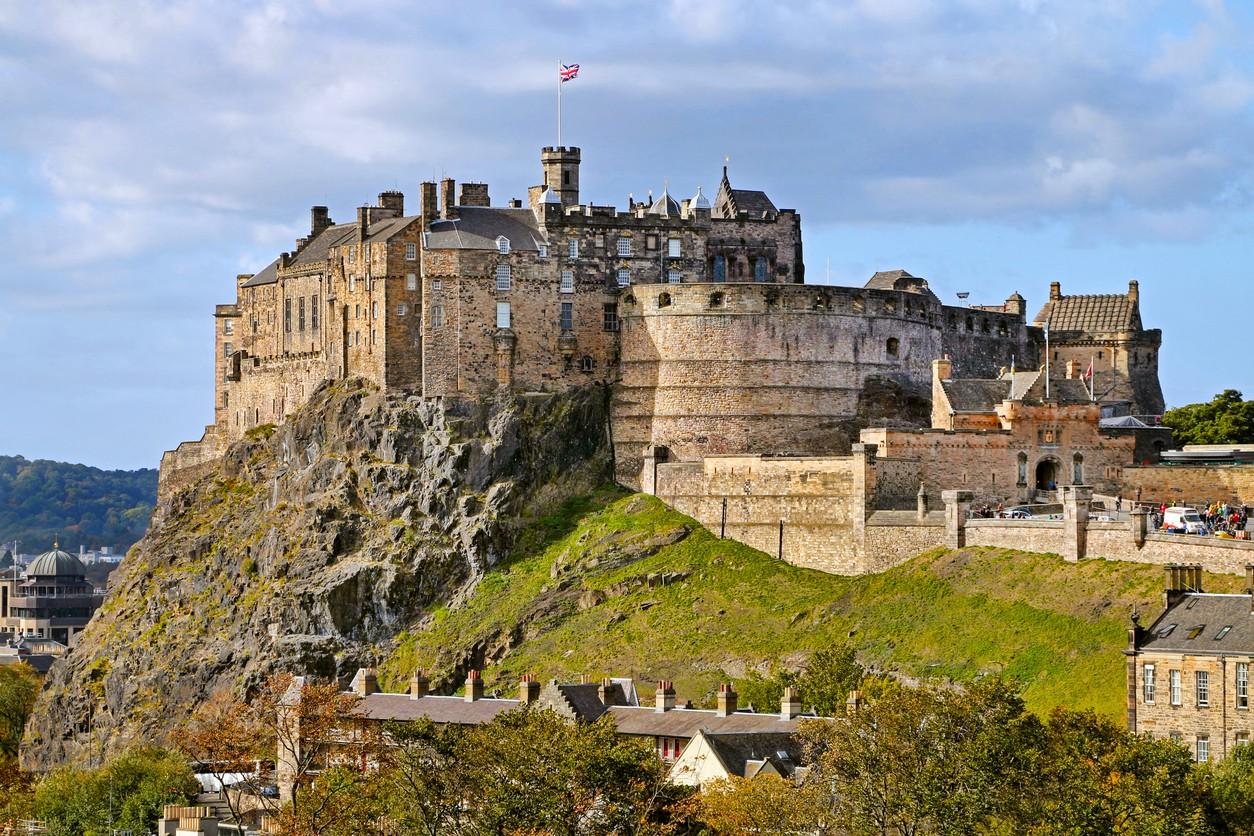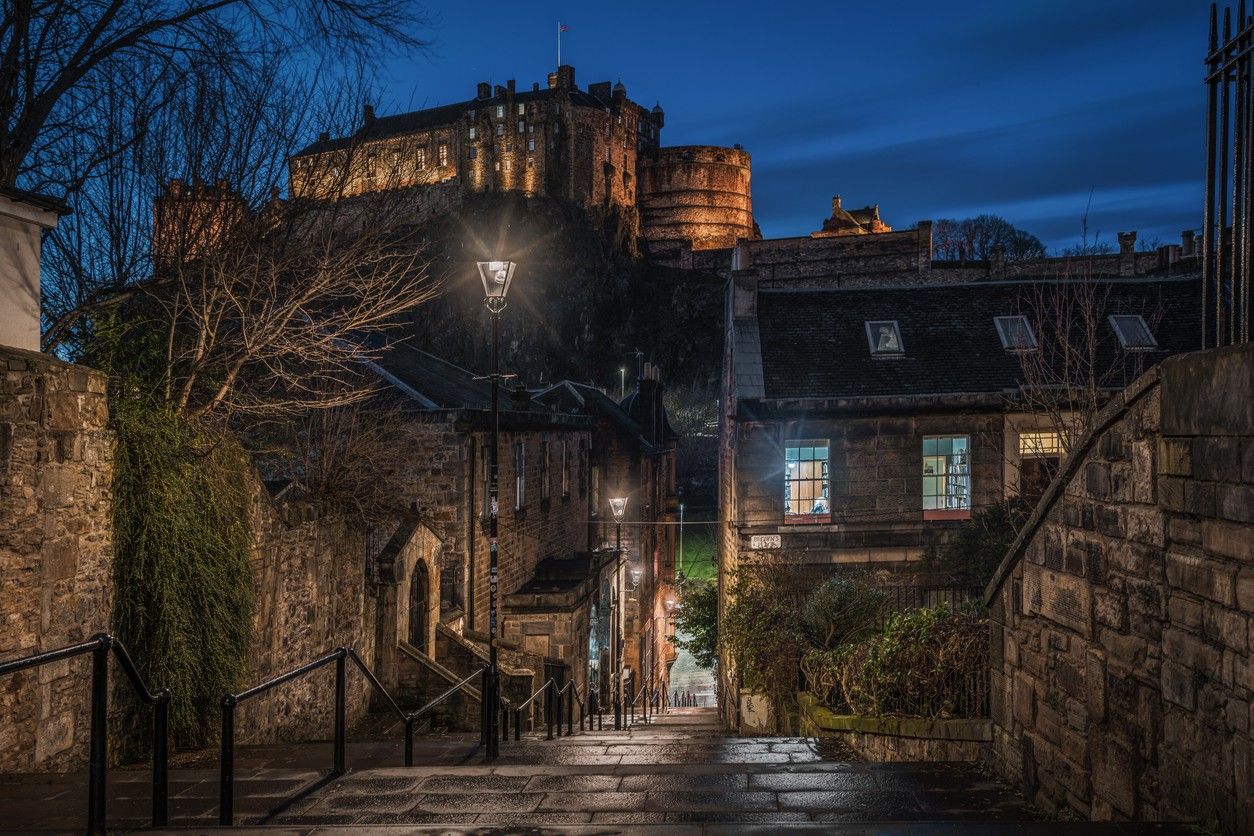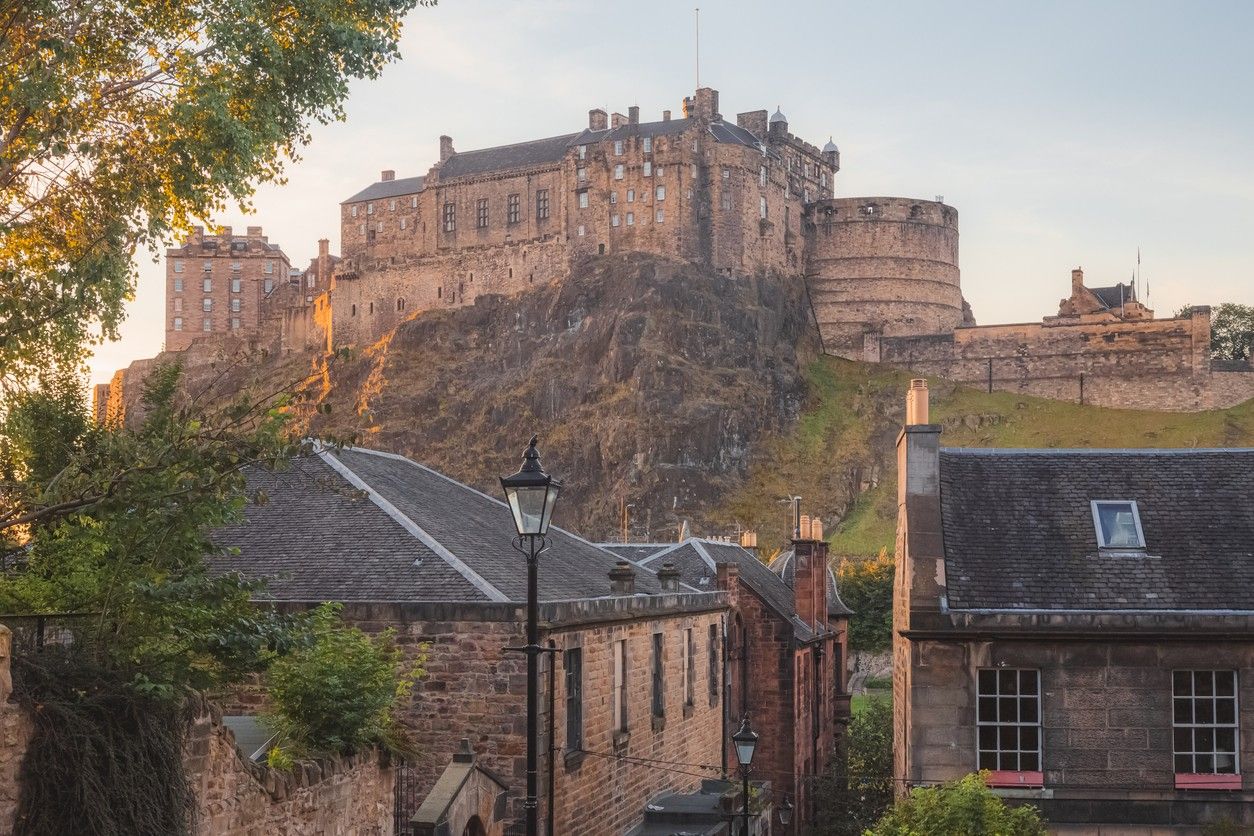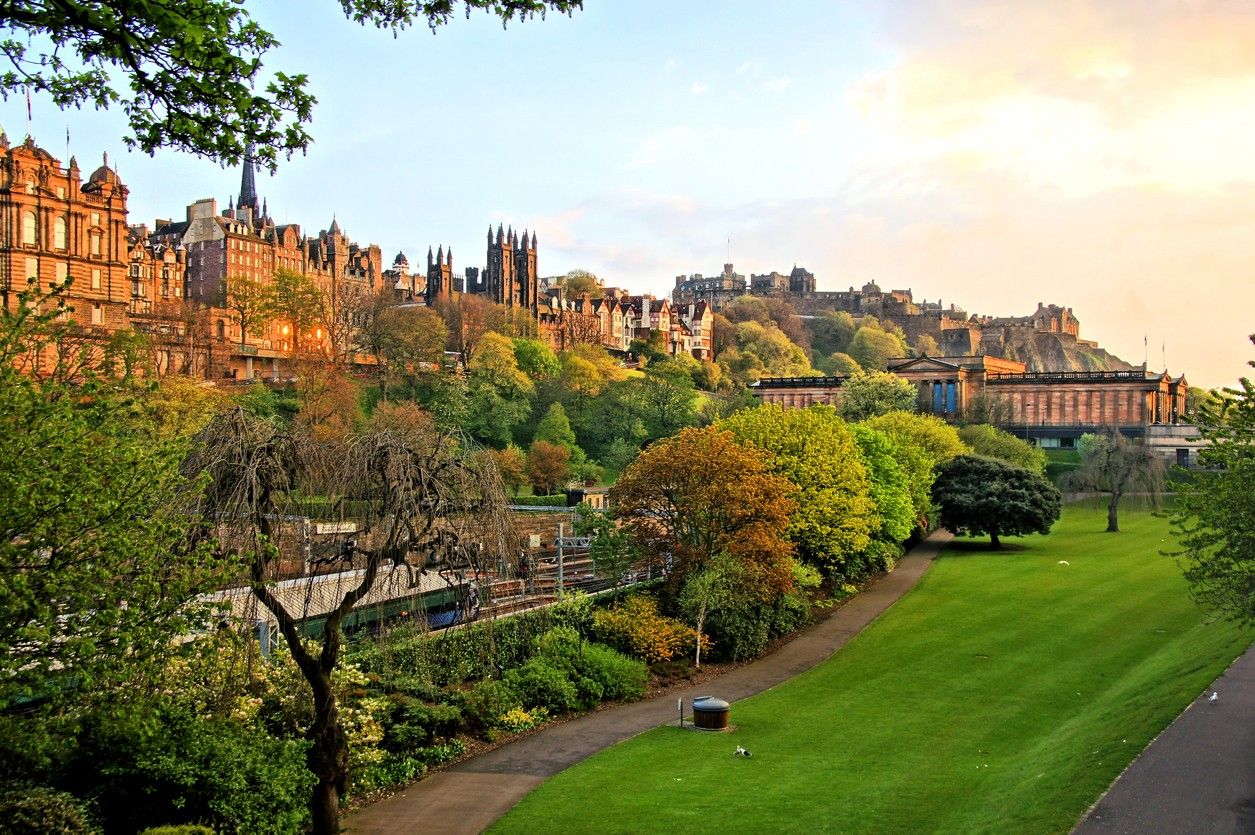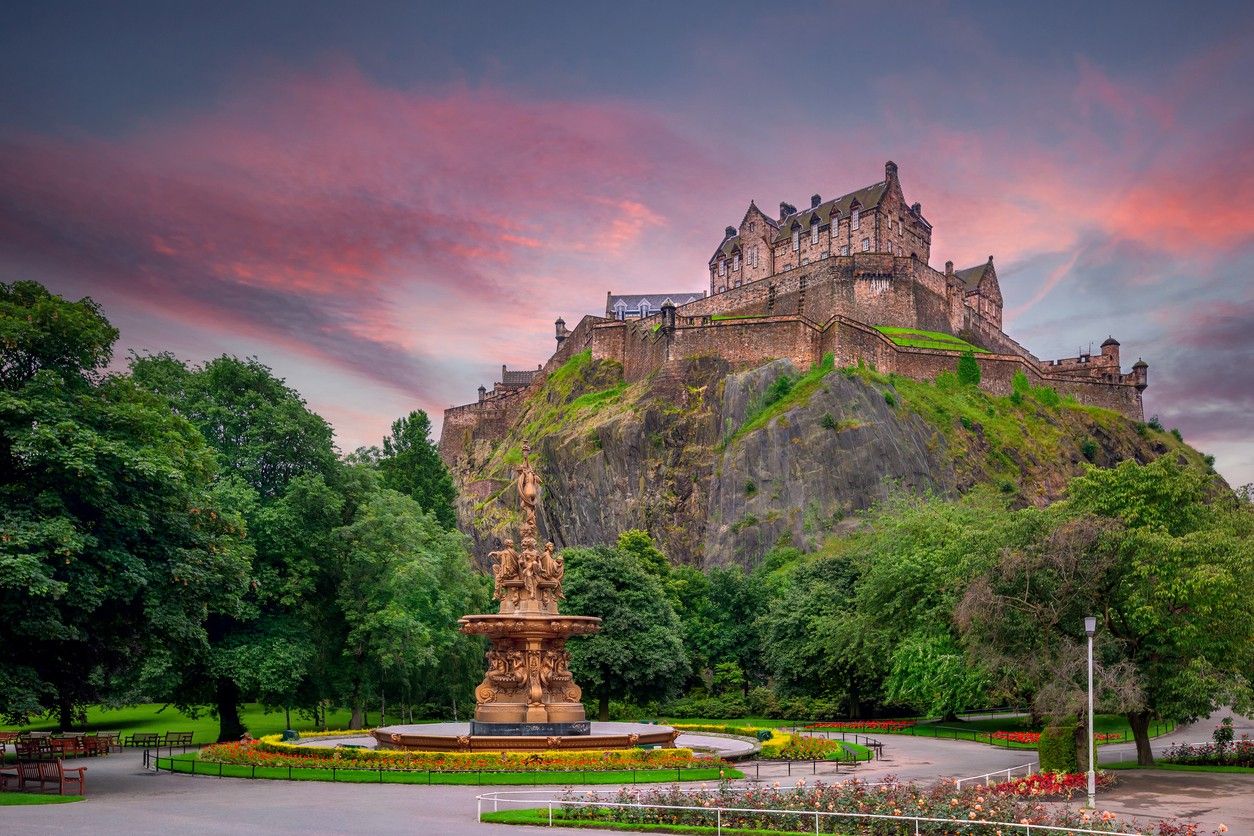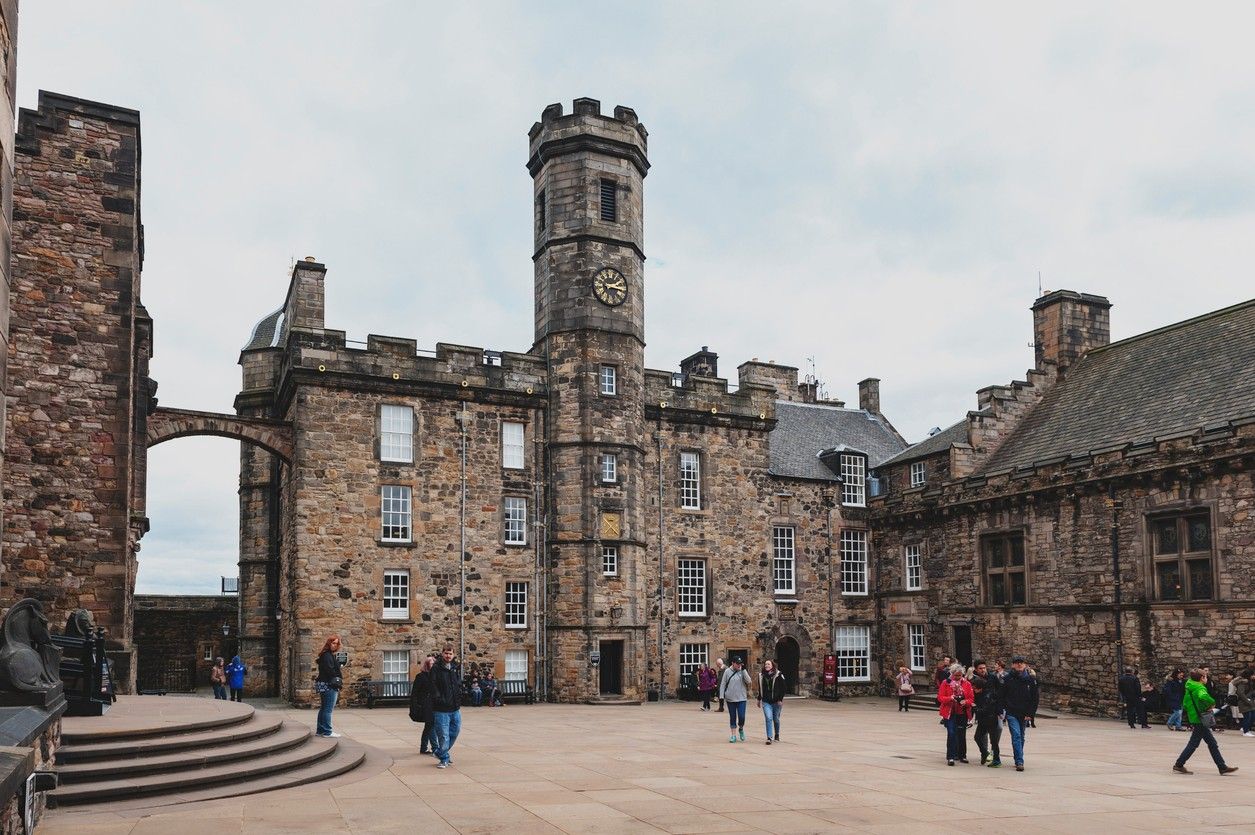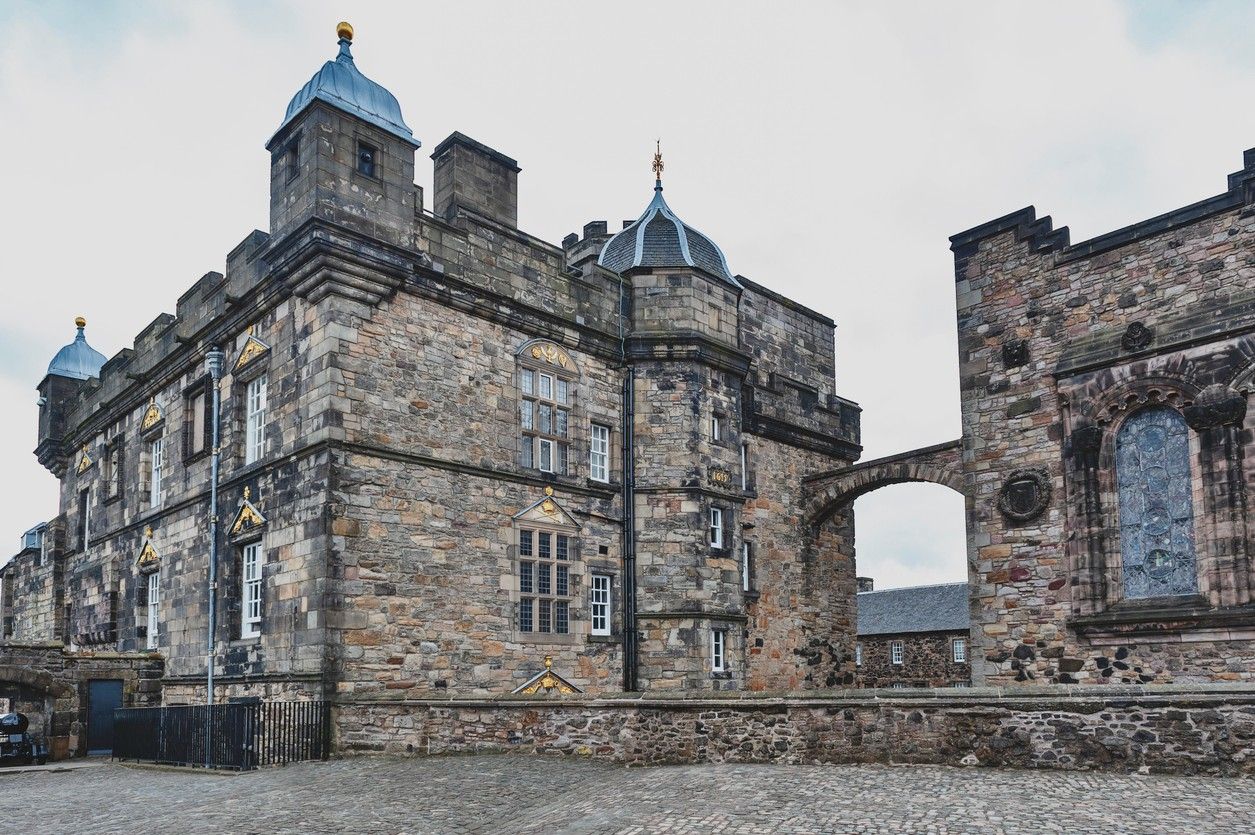Edinburgh Castle is an awe-inspiring fortress that has stood as a powerful symbol of Scotland's rich history and cultural heritage for centuries. Perched atop an ancient volcanic rock, this iconic landmark dominates the skyline of Edinburgh, the country's capital city. Its imposing walls, sturdy battlements, and towering structures have witnessed countless battles, sieges, and pivotal moments in Scottish history, making it one of the most captivating and historically significant castles in the world.
The Origins of Edinburgh Castle
The origins of Edinburgh Castle can be traced back to the Iron Age when the site was first used as a defensive settlement by the region's ancient inhabitants. Over the centuries, the castle has evolved from a simple hill fort to a formidable stronghold, serving as a royal residence, military garrison, and a symbol of Scottish power and independence.
A Pivotal Role in Scottish History
Edinburgh Castle has played a pivotal role in shaping the course of Scottish history, bearing witness to some of the nation's most defining moments. In the 11th century, the castle witnessed the birth of King David I, one of Scotland's most celebrated and influential monarchs. During his reign, David I transformed Scotland into a formidable European power, fostering the growth of trade, culture, and religious institutions. However, it was during the Wars of Scottish Independence in the 13th and 14th centuries that Edinburgh Castle truly cemented its place in the annals of history. The castle changed hands multiple times between the Scottish and English forces, becoming a strategic stronghold in the ongoing struggle for Scottish sovereignty. One of the most significant events was the famous siege of 1314 when the castle was retaken by the Scots under the leadership of Sir Thomas Randolph, a close ally of Robert the Bruce. This pivotal victory not only bolstered Scottish morale but also served as a turning point in the war, ultimately leading to the eventual recognition of Scottish independence at the Battle of Bannockburn later that year. Throughout the centuries that followed, Edinburgh Castle continued to play a crucial role in various conflicts and power struggles. During the Scottish Reformation in the 16th century, the castle became a battleground between Protestant and Catholic forces, with its possession hotly contested by both sides. In the 17th century, the castle was at the centre of the Wars of the Three Kingdoms, enduring a lengthy siege by Oliver Cromwell's forces before ultimately surrendering.
Architectural Evolution
The architectural evolution of Edinburgh Castle is a captivating tale of adaptation, fortification, and changing styles over the centuries. The earliest structures on the site date back to the Iron Age, when the rocky promontory was first used as a defensive settlement by the region's ancient inhabitants. As the centuries progressed, the castle underwent a series of expansions and renovations, each reflecting the architectural styles and defensive needs of the time. The imposing walls and battlements that dominate the castle's silhouette today were largely constructed during the medieval period, designed to withstand the most powerful siege engines and weapons of the era. During the Renaissance, the castle's architecture took on a more ornate and grandiose character, with the addition of the magnificent Great Hall and the lavishly appointed Royal Apartments. These structures showcased the wealth and power of Scotland's monarchs, incorporating intricate stone carvings, ornate plasterwork, and exquisite tapestries that reflected the artistic sensibilities of the time. The introduction of gunpowder and artillery in the 16th and 17th centuries necessitated further architectural adaptations, with the construction of sturdy gun emplacements and fortified batteries. The imposing Half Moon Battery, with its thick walls and strategically positioned cannon ports, is a testament to the ingenuity of military engineering during this period. In more recent times, the castle has undergone extensive restoration and conservation efforts to preserve its rich architectural heritage. Skilled stonemasons and craftspeople have painstakingly restored and maintained the castle's intricate details, ensuring that the diverse array of architectural styles remains intact for generations to come.
Exploring the Iconic Attractions of Edinburgh Castle
Edinburgh Castle is a treasure trove of historical wonders and architectural marvels, offering visitors a truly immersive experience of Scotland's past. Here are some of the must-see attractions within the castle walls:
The Royal Palace and Great Hall
One of the most impressive structures within Edinburgh Castle is the grand Royal Palace, a complex of lavish apartments and halls that served as the principal residence of Scottish monarchs for centuries. At the heart of the palace lies the magnificent Great Hall, a stunning example of medieval banqueting halls. Constructed in the early 16th century, the Great Hall is a true architectural marvel, boasting soaring vaulted ceilings, intricate wood carvings, and exquisite stone details that showcase the opulence of the Renaissance era. The hall's massive dimensions, measuring over 27 meters long and 11 meters wide, were designed to accommodate grand feasts, ceremonies, and courtly gatherings befitting a royal residence. The walls of the Great Hall are adorned with an impressive collection of historic armour and weapons, providing a tangible link to the castle's martial past. Additionally, visitors can marvel at the stunning wooden roof, carved with intricate patterns and heraldic symbols that pay homage to Scotland's rich cultural heritage. Adjacent to the Great Hall is the lavishly appointed Royal Apartments, which served as the private living quarters of Scottish monarchs and their families. These exquisite chambers showcase the finest examples of Renaissance interior design, with ornate plasterwork, delicately carved fireplaces, and sumptuous furnishings that exude an air of regal opulence.
St. Margaret's Chapel
Nestled within the confines of Edinburgh Castle is St. Margaret's Chapel, a remarkable architectural gem that has stood as a testament to Scotland's enduring faith for over nine centuries. Dating back to the 12th century, this exquisite chapel is one of the oldest surviving buildings in Edinburgh and a true masterpiece of Romanesque architecture. Constructed in the early 12th century by King David I in honour of his mother, Queen Margaret, the chapel's simple yet elegant design exemplifies the beauty and craftsmanship of the Romanesque style. The chapel's thick walls, constructed from locally quarried stone, have withstood the ravages of time and conflict, providing a sense of strength and resilience that mirrors the enduring spirit of Scottish faith. Upon entering the chapel, visitors are immediately struck by the serene atmosphere and the intricate details that adorn its interior. The arched doorways and windows, adorned with intricate carvings and decorative motifs, create a sense of harmony and balance that is characteristic of the Romanesque period. One of the chapel's most captivating features is the collection of stunning stained glass windows, which bathe the interior in a kaleidoscope of colours. These windows, meticulously restored and preserved, depict scenes from the life of St. Margaret and other religious figures, offering a glimpse into the spiritual beliefs and artistic traditions of medieval Scotland.
The Scottish Crown Jewels
Within the secure confines of Edinburgh Castle lie the priceless treasures of the Scottish Crown Jewels, a collection of regalia that has played a pivotal role in the nation's history and cultural identity. These iconic artefacts, including the Crown, Sceptre, and Sword of State, collectively known as the Honours of Scotland, have been meticulously preserved and are now on display in the castle's Crown Room. The Scottish Crown, a masterpiece of goldsmithing, dates back to the 16th century and is adorned with a stunning array of precious gemstones, including diamonds, pearls, and amethysts. The crown's intricate design, with its distinctive arched form and ornate fleurs-de-lis, is a testament to the skilled craftsmanship of the era and a powerful symbol of Scottish sovereignty. The Sceptre, a slender rod of silver gilt, is topped with a magnificent Scottish pearl and adorned with intricate carvings and decorative motifs. This regal staff, along with the Sword of State, a ceremonial sword with an exquisitely crafted hilt and blade, were once carried by Scottish monarchs during coronation ceremonies and other significant state events. Alongside the Honours of Scotland, the Crown Room also houses a collection of other precious artefacts, including the Royal Jewels and the ancient Stone of Destiny, adding to the allure and historical significance of this remarkable display.
The Stone of Destiny
Shrouded in mystery and legend, the Stone of Destiny, also known as the Stone of Scone, is a revered relic that has played a pivotal role in the inauguration of Scottish kings for centuries. This ancient coronation stone, a simple block of reddish-grey sandstone, is now housed within Edinburgh Castle, drawing visitors from around the world who seek to unravel its enigmatic past. According to legend, the Stone of Destiny was once used as a pillow by the biblical patriarch Jacob and was later brought to Scotland by Princess Scota, a figure from Irish mythology. Regardless of its true origins, the stone has been an integral part of Scottish coronation ceremonies since the 9th century, serving as the sacred seat upon which Scottish monarchs were enthroned and anointed. The stone's history is marked by a series of dramatic events, including its capture by King Edward I of England in 1296 and its subsequent removal to Westminster Abbey, where it remained for over 600 years. In 1950, a daring raid orchestrated by Scottish nationalists saw the stone's return to Scotland, reigniting a sense of national pride and sovereignty. Today, the Stone of Destiny resides in a specially designed oak casket within the Crown Room of Edinburgh Castle, its enigmatic presence adding to the allure and mystique of this iconic fortress. Visitors can marvel at the ancient relic and ponder the legends and stories that have been woven into its storied history, gaining a deeper appreciation for the enduring symbolism and cultural significance it holds for the Scottish people.
Mons Meg
Towering over the castle's grounds stands Mons Meg, a colossal 15th-century cannon that once served as a formidable symbol of Edinburgh Castle's military might. This awe-inspiring artillery piece, weighing an astonishing 6 tons and capable of firing stone projectiles weighing over 300 pounds, is a true testament to the ingenuity and craftsmanship of medieval weaponry. Forged in the early 15th century in the Belgian town of Mons, Mons Meg was a technological marvel of its time, representing the pinnacle of cannon engineering and manufacturing. The cannon's imposing size and immense power were designed to strike fear into the hearts of enemy forces, serving as a deterrent against any potential invaders. During its active service, Mons Meg played a pivotal role in several significant battles and sieges, including the siege of Norham Castle in 1497, where its thunderous roar echoed across the battlefields, raining down a barrage of destructive stone projectiles on the enemy fortifications.
Today, Mons Meg stands as a silent sentinel within Edinburgh Castle's grounds, a tangible reminder of the castle's formidable defences and its role in shaping the course of Scottish history. Visitors can marvel at the cannon's immense size and intricate details, marvelling at the skill and craftsmanship required to forge such a colossal weapon. Interpretive displays and knowledgeable guides provide insight into the cannon's rich history, regaling visitors with tales of its exploits on the battlefield and the ingenious engineering that went into its construction. From the intricate carvings adorning its barrel to the complex mechanisms used to load and fire its massive projectiles, every aspect of Mons Meg is a testament to the human spirit's capacity for innovation and creativity, even in the pursuit of military might.
Exploring Edinburgh Castle's Surroundings
The Royal Mile
Stretching from the majestic gates of Edinburgh Castle to the elegant Palace of Holyroodhouse, the iconic Royal Mile is a captivating journey through the heart of Scotland's capital. This historic thoroughfare, lined with a tapestry of medieval and Georgian architecture, offers visitors a tangible connection to Edinburgh's rich heritage and storied past. Every turn presents a new architectural marvel, from the imposing facade of St. Giles' Cathedral, with its stunning Gothic spires, to the charming closes and wynds that wind their way through the city's historic core.
One of the highlights along the Royal Mile is the Real Mary King's Close, a preserved 17th-century street hidden beneath the bustling city above. This remarkable time capsule offers a rare glimpse into the lives of Edinburgh's residents during the tumultuous times of plague and persecution, with interactive exhibits and guided tours bringing the stories of those who once called these narrow streets home vividly to life. Beyond its architectural treasures, the Royal Mile is a vibrant hub of cultural activity, with street performers, buskers, and traditional Scottish music adding a lively ambience to the historic setting. Charming shops and cosy pubs beckon visitors to linger, offering a taste of local hospitality and a chance to immerse themselves in the rich tapestry of Scottish culture.
The Vennel Viewpoint
Perched atop the iconic Vennel steps, nestled in the heart of Edinburgh's Old Town, lies the Vennel Viewpoint, a stunning vantage point that offers breathtaking panoramic views of the city's most iconic landmark – Edinburgh Castle. This secluded spot, beloved by locals and visitors alike, provides a unique perspective on the majestic fortress, allowing you to take in its imposing silhouette and intricate architectural details from a privileged vantage point. From this elevated position, Edinburgh Castle takes on a commanding presence, its ancient walls and battlements standing resolute against the backdrop of the city's skyline. The intricate details of the castle's architecture come into sharp focus, from the ornate carvings adorning the Royal Palace to the imposing silhouette of the Half Moon Battery, a testament to the ingenuity of military engineering throughout the ages. The Vennel Viewpoint offers more than just a visual feast; it also provides a unique opportunity to appreciate the castle's harmonious integration with its natural surroundings. The rugged cliffs and volcanic outcroppings upon which the fortress is built create a striking contrast with the manicured gardens and verdant parks that surround it, highlighting the city's seamless blend of natural and man-made wonders. For photographers and artists alike, the Vennel Viewpoint is a prime location to capture the essence of Edinburgh Castle in all its glory. The ever-changing light and weather conditions create a dynamic canvas, with the castle's facade shifting from warm golden hues at sunrise to dramatic shadows and silhouettes at sunset.
Princes Street Gardens
Nestled in the heart of Edinburgh's vibrant city centre, Princes Street Gardens offers a tranquil oasis of natural beauty and serenity, providing a welcome respite from the bustling streets and historic landmarks that surround it. These picturesque public gardens, stretching along the length of Princes Street, are a beloved destination for locals and visitors alike, offering a variety of recreational and cultural experiences amidst a stunning backdrop of iconic architecture and natural splendour. The gardens' central location provides a striking juxtaposition, with the towering walls of Edinburgh Castle looming overhead on one side, and the elegant Georgian facades of the city's New Town on the other. One of the gardens' most captivating features is the series of tranquil ponds and waterways that wind their way through the landscape. These reflective pools offer a serene backdrop for strolls, providing a sense of calm and tranquillity amidst the urban surroundings. During the warmer months, visitors can rent pedal boats and glide across the waters, taking in the picturesque scenery from a unique vantage point. Throughout the gardens, you'll discover a wealth of cultural and historical treasures, including the iconic Ross Fountain, a stunning cast-iron structure adorned with intricate carvings and statues, and the striking Scottish National Gallery, a neo-classical masterpiece housing an impressive collection of art and sculpture. Princes Street Gardens offers a variety of recreational opportunities. Outdoor performances and concerts are regularly held on the gardens' expansive lawns, providing a vibrant cultural experience against the backdrop of Edinburgh's iconic cityscape. Families can enjoy the playground areas, complete with swings, slides, and climbing structures, while fitness enthusiasts can take advantage of the garden's running and cycling paths.
Guided Tours and Events
To truly unlock the secrets and stories that lie within Edinburgh Castle's ancient walls, visitors can enhance their experience by participating in a variety of guided tours and events. From traditional storytelling performances to immersive historical reenactments and even the spectacular Edinburgh Castle Concert Series, these offerings provide a deeper level of engagement and understanding, ensuring that every visit is a journey into the heart of Scotland's rich cultural heritage. One of the most popular and captivating experiences is the Candlelit Tour of Edinburgh Castle, where visitors are guided through the dimly lit corridors and chambers by costumed storytellers. As the flickering flames cast eerie shadows across the stone walls, these skilled performers regale guests with tales of ghostly apparitions, tragic love stories, and the castle's darkest secrets, bringing the fortress's rich history to life in a truly atmospheric and unforgettable way.
For those seeking a more hands-on experience, the castle offers a range of interactive events and reenactments that transport visitors back in time. From witnessing the pageantry of a 16th-century royal banquet to participating in a medieval sword-fighting demonstration, these immersive experiences provide a tangible connection to the castle's past, allowing guests to step into the shoes of those who once walked these hallowed halls.
Music and performance also play a vital role in the castle's cultural offerings, with the iconic Edinburgh Castle Concert Series showcasing world-class musicians and performers against the backdrop of the iconic fortress. From classical concerts featuring renowned orchestras and soloists to rousing performances of traditional Scottish music and dance, these events celebrate the rich tapestry of Scotland's artistic heritage while offering visitors a truly memorable and unique experience.
Beyond the scheduled tours and events, Edinburgh Castle also offers a range of specialised guided experiences tailored to specific interests and areas of expertise. History buffs can delve deeper into the castle's storied past with in-depth tours led by knowledgeable historians, while architecture enthusiasts can explore the intricate details and design elements that have shaped the fortress over the centuries.
The Enduring Legacy of Edinburgh Castle: A Fortress of History and Culture
Royal Celebrations and Ceremonies
Edinburgh Castle has been a stage for royal celebrations and ceremonies throughout Scotland's storied history, serving as a backdrop for momentous occasions that have shaped the nation's cultural identity and traditions. From the pomp and pageantry of coronations to the solemn rituals of state funerals, the castle's ancient walls have witnessed the grandeur and solemnity of these pivotal events, etching their significance into the collective memory of the Scottish people.
One of the most iconic ceremonies held within the castle's confines is the Scottish Coronation. For centuries, Edinburgh Castle has played host to the elaborate rituals and traditions surrounding the crowning of Scottish monarchs. The Great Hall, with its soaring vaulted ceilings and ornate wood carvings, has served as the grand setting for these momentous occasions, where the newly anointed sovereign would receive the Scottish Crown Jewels and be bestowed with the symbols of their authority and power. During these grand ceremonies, the castle's esplanade would be transformed into a vibrant spectacle, with colourful processions, the thunderous roar of cannons, and the cheers of the assembled crowds echoing across the ancient stones. The pageantry and grandeur of these events were not merely displays of royal pomp but rather a celebration of Scotland's rich cultural heritage and a reaffirmation of the enduring bond between the monarchy and the people.
Beyond coronations, Edinburgh Castle has also been the site of numerous royal weddings, baptisms, and investitures, each occasion marked by its unique traditions and rituals. The birth of a royal heir within the castle's walls would be heralded with grand celebrations, while the solemn funerals of beloved monarchs would see the castle draped in mourning, its grounds echoing with the mournful strains of bagpipes and the solemn processions of the bereaved. In more recent times, the castle has continued to play host to significant royal events, serving as a backdrop for state visits, commemorative ceremonies, and the annual Royal Edinburgh Military Tattoo – a grand display of military pageantry and cultural performances that attracts visitors from around the world. Through these grand celebrations and solemn rituals, Edinburgh Castle has become an enduring symbol of Scotland's royal heritage and cultural traditions, a living testament to the enduring bond between the monarchy and the nation it represents.
Literary and Artistic Inspiration
Edinburgh Castle's iconic silhouette and rich tapestry of tales have long captivated the imaginations of artists, writers, and storytellers, providing a wellspring of inspiration for countless literary and artistic works. From the atmospheric novels of Sir Walter Scott to the haunting poetry of Robert Louis Stevenson, the castle's enduring presence has left an indelible mark on the cultural landscape of Scotland and beyond. For writers, the castle's very stones seem to whisper tales of bygone eras, inspiring narratives that weave together threads of history, legend, and imagination. Sir Walter Scott's seminal novel "Waverley," often credited as the first historical novel, drew heavily from the castle's storied past, painting vivid portraits of the conflicts and characters that once walked its corridors. Robert Louis Stevenson, too, found inspiration within the castle's walls, with his eerie tales of the supernatural often drawing upon the ghostly legends and mysteries that have swirled around the fortress for centuries.
In the realm of visual arts, Edinburgh Castle has provided a captivating subject for countless painters, sculptors, and photographers. The iconic silhouette of the castle, perched atop its rocky promontory, has been immortalised in countless canvases, each artist capturing the monument's grandeur and majesty through their unique artistic lens. From the atmospheric paintings of the Scottish Colourists to the evocative photographs of contemporary artists, the castle's enduring presence continues to inspire and captivate. Beyond literature and visual arts, the castle has also served as a muse for musicians and composers, its rich history and cultural significance providing a fertile ground for musical expression. Traditional Scottish ballads and folk songs often weave tales of the castle's heroes and battles, while contemporary composers have drawn inspiration from its atmospheric ambience, crafting haunting melodies and orchestral works that evoke the fortress's enduring spirit.
Celebrating Scottish Arts and Traditions
Edinburgh Castle is not only an iconic landmark but also a living celebration of Scotland's rich artistic and cultural traditions. Within its ancient walls and courtyards, visitors can immerse themselves in a vibrant tapestry of artistic expressions, from the haunting melodies of bagpipe performances to the intricate patterns of tartan weaving, gaining a deeper appreciation for the nation's enduring cultural heritage. One of the most iconic and captivating experiences at the castle is the chance to witness the stirring sounds of bagpipe performances. As the haunting notes resonate through the stone corridors and courtyards, visitors are treated to a truly authentic expression of Scottish musical tradition. These skilled pipers, clad in traditional Highland attire, showcase the artistry and mastery that have been passed down through generations, evoking a sense of pride and reverence for Scotland's cultural roots.
In addition to musical performances, the castle also celebrates the rich traditions of Scottish textile arts, including the iconic art of tartan weaving. Visitors can marvel at the intricate patterns and vibrant colours of these traditional tartans, each design steeped in historical significance and symbolic meaning. Skilled weavers demonstrate their craft, showcasing the intricate techniques and meticulous attention to detail that have been perfected over centuries. Beyond textiles, the castle also pays homage to Scotland's rich heritage of metalworking and jewellery-making. Skilled artisans showcase their mastery of traditional techniques, crafting intricate pieces that combine Celtic motifs with contemporary design elements. From delicate silver jewellery adorned with intricate knotwork to ornate sword hilts and armour embellishments, these works of art celebrate the enduring legacy of Scottish craftsmanship.
For those seeking a deeper immersion into Scottish cultural traditions, the castle offers a range of hands-on workshops and demonstrations. Visitors can learn the art of Highland dancing, with skilled instructors guiding them through the intricate footwork and graceful movements that have been a cornerstone of Scottish culture for centuries. Culinary enthusiasts can delve into the rich world of Scottish cuisine, discovering the secrets behind iconic dishes like haggis and learning traditional cooking techniques passed down through generations. Through these immersive experiences and artistic celebrations, Edinburgh Castle serves as a living embodiment of Scotland's cultural heritage, offering visitors a unique opportunity to appreciate the depth and richness of the nation's artistic traditions while fostering a deeper understanding and appreciation for the enduring spirit that lies at the heart of Scottish identity.
Scotland's Culinary Heritage
Edinburgh Castle is not only a monument to Scotland's storied past but also a celebration of the nation's rich culinary heritage. Within its ancient walls and courtyard, visitors can embark on a gastronomic journey that spans centuries of culinary traditions, savouring the flavours, ingredients, and time-honoured recipes that have shaped Scotland's diverse and distinctive cuisine. At the heart of the castle's culinary offerings lies a deep reverence for locally sourced, seasonal ingredients. From the succulent game meats and fresh seafood to the vibrant array of fruits and vegetables, the chefs and purveyors who operate within the castle's grounds take great pride in showcasing the best of Scotland's bountiful larder.
One of the most iconic dishes celebrated at Edinburgh Castle is the beloved haggis, a savoury pudding made from a mixture of sheep offal, oats, and spices. This iconic national dish, steeped in tradition and history, is a must-try for visitors seeking an authentic taste of Scottish cuisine. Whether enjoyed as part of a traditional Burns Night celebration or savoured as part of a hearty meal, the rich, earthy flavours of haggis are a testament to Scotland's culinary ingenuity and resourcefulness. Beyond haggis, the castle's culinary offerings showcase a diverse array of Scottish dishes, each with its own unique story and cultural significance. From the rich and creamy Cullen skink, a traditional smoked haddock soup, to the hearty steak pie, a beloved staple of Scottish pubs and inns, visitors can indulge in a culinary journey that celebrates the nation's rich culinary heritage.
The castle offers a variety of culinary workshops and demonstrations, where skilled chefs and food historians share their knowledge and expertise. Visitors can learn the art of traditional bread-making, discover the secrets behind Scotland's iconic whisky distillation process, or delve into the history and cultural significance of iconic dishes like cock-a-leekie soup and Dundee cake. In addition to its culinary offerings, Edinburgh Castle also celebrates Scotland's rich brewing and distilling traditions. From the historic vaults that once housed the castle's ale and wine stores to the modern-day whisky tastings and cocktail experiences, visitors can explore the fascinating world of Scottish libations and gain a deeper appreciation for the artistry and craft that goes into creating these beloved beverages.
Uncovering the Myths, Legends, and Mysteries of Edinburgh Castle
Edinburgh Castle's rich tapestry of history is interwoven with tales of ghostly encounters and paranormal phenomena, adding an air of mystery and intrigue to this iconic landmark. Throughout the centuries, countless visitors and residents have reported eerie sightings, unexplained noises, and spine-tingling experiences within the castle's ancient walls, fueling a rich tradition of ghostly lore and supernatural legends. One of the most famous and enduring tales is that of the Headless Drummer Boy. According to legend, during a siege of the castle in the 17th century, a young drummer boy was decapitated by a cannonball while bravely rallying the troops from the battlements. His restless spirit is said to haunt the castle grounds, with reports of ghostly drumbeats echoing through the night and the apparition of a headless figure roaming the ramparts.
Another chilling account involves the ghost of a former prison guard, whose tormented spirit is believed to linger within the castle's grim Prisons of War. Visitors have reported encountering a shadowy figure clad in a tattered uniform, accompanied by the sound of jangling keys and the unmistakable feeling of a malevolent presence. In the lavish Royal Apartments, tales of a ghostly piper have circulated for centuries. The spirit, believed to be that of a former court musician, is said to haunt the chambers, with the melancholic strains of bagpipe music drifting through the corridors at night, sending chills down the spines of unsuspecting visitors. Beyond these well-known apparitions, Edinburgh Castle is rife with reports of unexplained occurrences and paranormal activity. From doors slamming shut on their own to disembodied footsteps echoing through empty halls, the castle's atmospheric corridors and chambers seem to harbour a wealth of otherworldly secrets.
For those brave enough to delve into the castle's paranormal mysteries, guided ghost tours offer a thrilling and spine-tingling experience. Led by knowledgeable guides, these tours explore the castle's most haunted locations, recounting chilling tales and personal encounters with the supernatural. Visitors can even participate in interactive paranormal investigations, using specialised equipment to detect and record any potential ghostly activity.

Let us know you agree to cookies
We use marketing, analytical and functional cookies as well as similar technologies to give you the best experience. Third parties, including social media platforms, often place tracking cookies on our site to show you personalised adverts outside of our website.
We store your cookie preferences for two years and you can edit your preferences via ‘manage cookies’ or through the cookie policy at the bottom of every page. For more information, please see our cookie policy.
